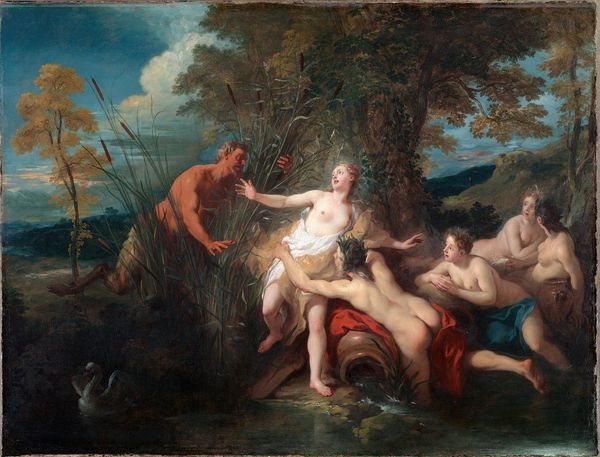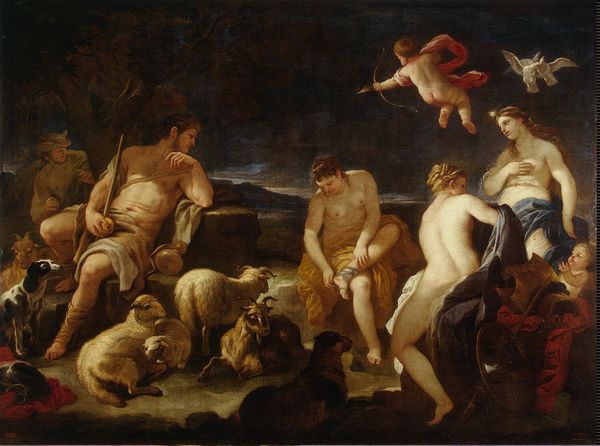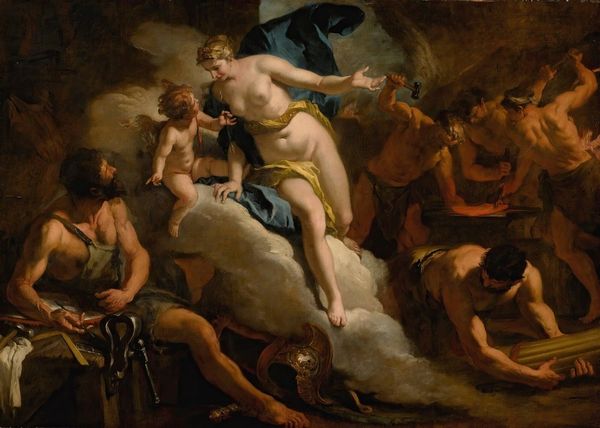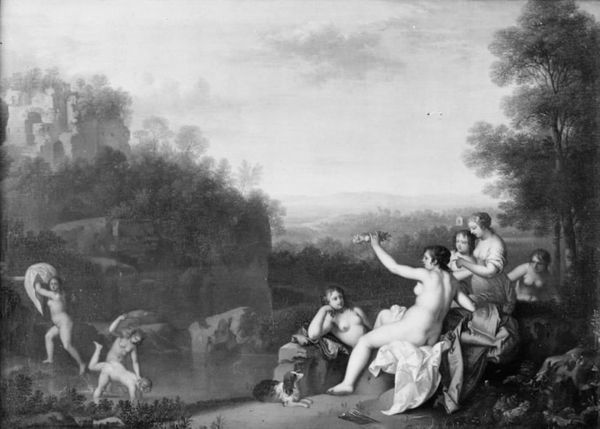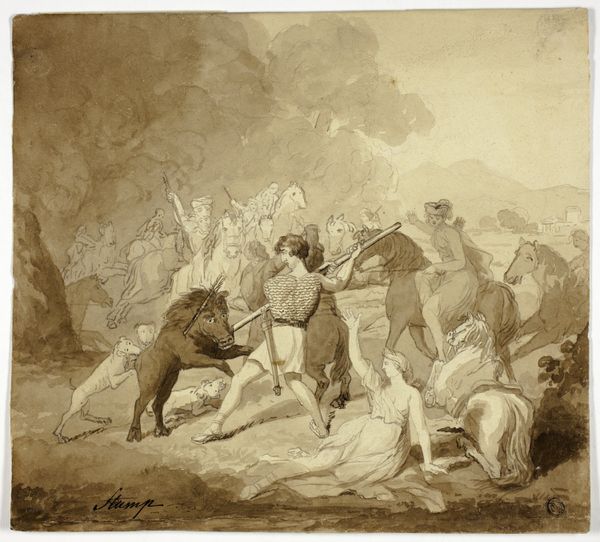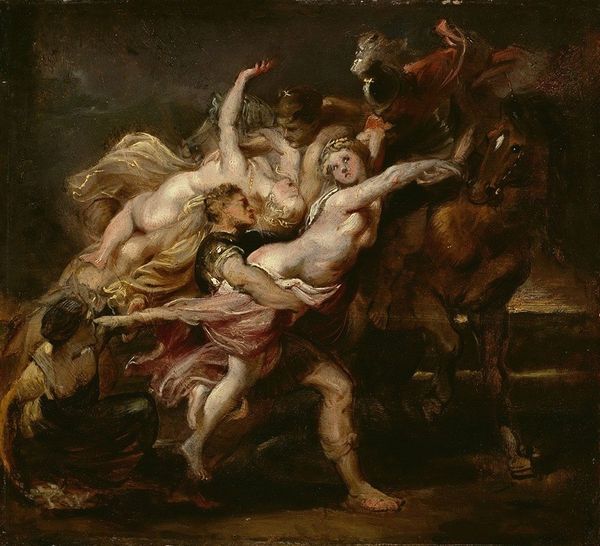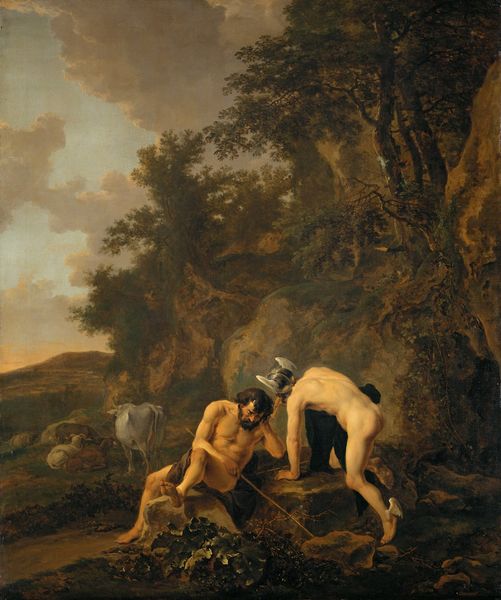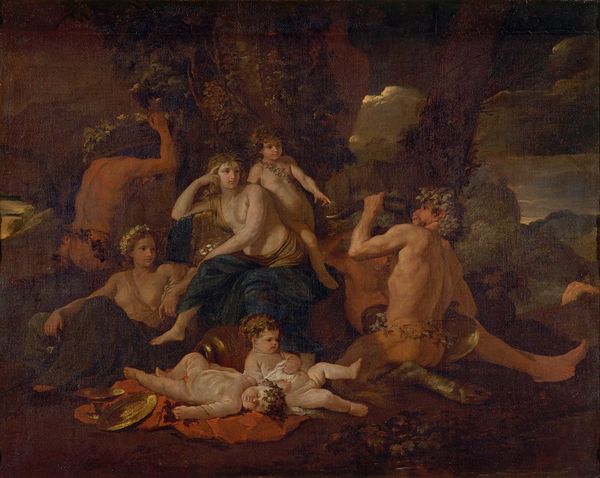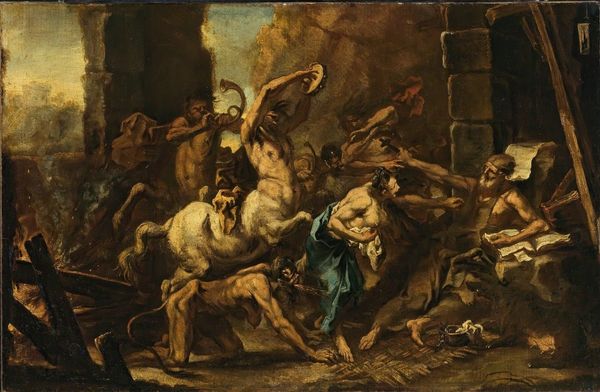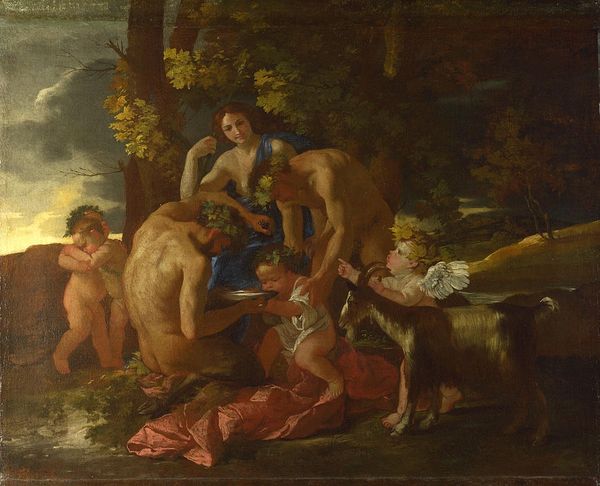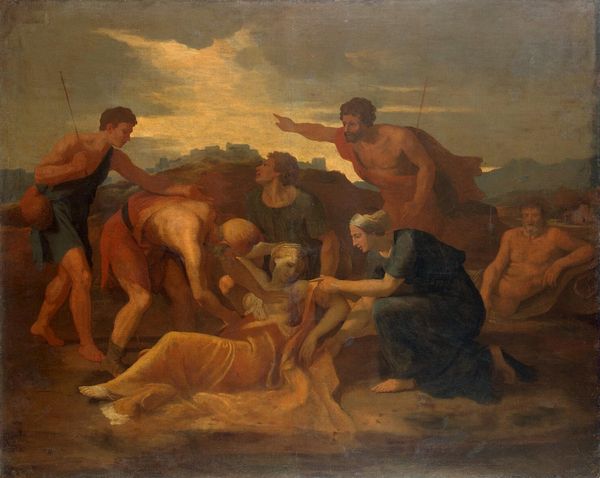
#
impressionistic
#
acrylic
#
abstract painting
#
possibly oil pastel
#
oil painting
#
neo expressionist
#
acrylic on canvas
#
underpainting
#
mythology
#
painting painterly
#
expressionist
Copyright: Public domain
Charles Le Brun painted Hercules Slaying the Centaurs during the 17th century. In it, we see a scene of absolute chaos and violence, but behind the surface lies a fascinating glimpse into the politics of imagery. Le Brun created this painting in France, a country then ruled by Louis XIV, a monarchy that was heavily involved in commissioning art. In this context, the image of Hercules slaying the centaurs becomes more than just a mythological scene; it symbolizes the triumph of reason and order over barbarism, a theme that flatters the King’s absolutist rule. The cultural associations would be obvious to contemporary viewers who may have understood Hercules’ victory as the King's power over his subjects. To understand the painting better, we can research the archives of the French Royal Academy of Painting and Sculpture, which shaped artistic tastes at the time, and the writings of court historians, who provide context on the political climate in which Le Brun was working. Art is never created in a vacuum, and its meaning is contingent on these contexts.
Comments
No comments
Be the first to comment and join the conversation on the ultimate creative platform.
